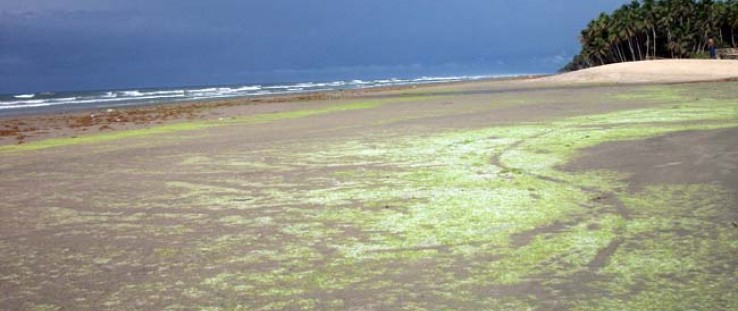 Since 2009, USAID's Hen Mpoano Initiative has been working to discover the root causes of severe marine algae and seawood near the western border of Ghana, identify mitigation measures, and set the stage for alternative livelihoods in the affected areas.
Ali Issah/Coastal Resources Center
Since 2009, USAID's Hen Mpoano Initiative has been working to discover the root causes of severe marine algae and seawood near the western border of Ghana, identify mitigation measures, and set the stage for alternative livelihoods in the affected areas.
Ali Issah/Coastal Resources Center
 Since 2009, USAID's Hen Mpoano Initiative has been working to discover the root causes of severe marine algae and seawood near the western border of Ghana, identify mitigation measures, and set the stage for alternative livelihoods in the affected areas.
Ali Issah/Coastal Resources Center
Since 2009, USAID's Hen Mpoano Initiative has been working to discover the root causes of severe marine algae and seawood near the western border of Ghana, identify mitigation measures, and set the stage for alternative livelihoods in the affected areas.
Ali Issah/Coastal Resources Center
It is my pleasure to have joined USAID earlier this year, and to have this opportunity to reach out to the broader development community about USAID's leadership on climate change. As many of you know, climate change is one of the greatest economic, social, and environmental challenges of our time. USAID is working to help countries accelerate their transition to climate-resilient, low-emissions development, helping advance the global green economy.
We work with partner countries to invest in sustainable economic growth that is not only resilient to climate change but also reduces contributions to greenhouse gas (GHG) emissions.
Historically, developed countries have emitted most of the gases that are warming the planet, but this is changing. China recently passed the United States as the top overall GHG emitter, and the International Energy Agency estimates that more than 90 percent of carbon dioxide emissions growth from now until 2030 will come from the developing world.
Because their economies tend to rely on activities that are vulnerable to climate shocks, such as agriculture and tourism, the countries where USAID works are going to be particularly affected.
Investments in clean energy, sustainable forestry, and adaptation to climate change are also investments in sustainable economic growth. Economic development is not an additional or peripheral activity, but rather ingrained throughout our global climate change programs. As a result, USAID's substantial environment programming advances economic growth while ensuring reduction in greenhouse gas emissions, smart investments in adaptation, disaster preparedness and response, the preservation of ecosystem services, and more.
A Daunting Challenge
USAID is considering how our activities affect greenhouse gas emissions and the impacts that a changing climate is already having (and will continue to have) on our globe and on USAID's work in order to make decisions about all of our development planning, programming, and activities.
For example, more variable rainfall, stronger storms, and increasing temperatures have the potential to reduce agricultural productivity; warming ocean temperatures and ocean acidification are already negatively impacting fisheries. These impacts are poised to undermine the livelihoods of millions in developing countries, especially the poorest. Similarly, warmer temperatures, increased incidence of flooding and drought, saltwater intrusion into drinking-water supplies, climate-related impacts on food security, and the migration of disease vectors into new areas (such as mosquitoes carrying malaria) will affect public health by undermining access to clean water and sanitation, reducing nutrition, and changing disease distribution patterns and prevalence.
Implementing practical adaptation responses to these threats is an important element of risk mitigation, both to ensure the livelihoods and health of USAID's beneficiaries and to ensure the sustainability of past, current, and future USAID development investments. Likewise, USAID's investments in reducing greenhouse gas emissions through investments in clean energy, energy efficiency, and sustainable forestry work to reduce current and future greenhouse gas emissions which have global implications.
This may seem a daunting challenge, but USAID is already leading the way in incorporating climate change across our development portfolio. And, I am pleased to say USAID's new Climate Change and Development Strategy provides guidance and a roadmap for USAID's climate change work, including integration of climate considerations into everything that we do.
Solutions for an Interdependent World
USAID also recognizes that public financing cannot meet this challenge alone. Recent economic crises have clearly shown once again that our world is increasingly interdependent. Foreign aid, as traditionally conceived, is just one part of a dense web of economic relations between the developed and developing world. As a development agency, USAID has a great deal in common with the private sector, and we have invested in more than 1,000 successful public-private partnerships as a result.
In fact, many of the challenges that businesses face overseas are really symptoms of the development challenges that we are working to address. For example, a company may be concerned with issues such as supply-chain stability or lack of qualified workers, while USAID seeks to improve opportunities for smallholder farmers or young people entering the workforce.
Under Administrator Rajiv Shah's leadership, USAID now has an opportunity to take our investments to a new level of success—investing in public-private partnerships at a larger scale and in a way that demonstrates our capability to leverage significant additional resources to further development goals. Examples of the types of investments USAID is pursuing include partnerships with renewable-electricity, clean-fuels, energy-efficiency, sustainable-forestry, and sustainable-supply-chain businesses to invest in clean economic growth as well as partnerships with water utilities, insurance or re-insurance companies, tourism industry, agricultural producers, and others to prepare for and respond to our changing climate.
I am proud that a portion of this issue of FrontLines focuses on climate change. The following pages outline examples of USAID's leadership on the Obama Administration’s Global Climate Change Initiative and the integration of this work across our development portfolio. This is an exciting time to be working at USAID.
Kit Batten was appointed USAID's global climate change coordinator in January 2011. She coordinates climate change activities across all bureaus in the Agency.







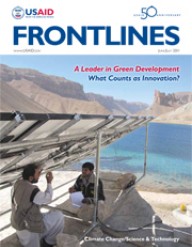

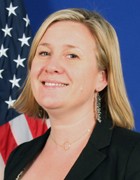
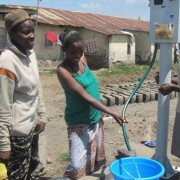
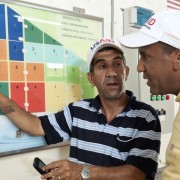
Comment
Make a general inquiry or suggest an improvement.